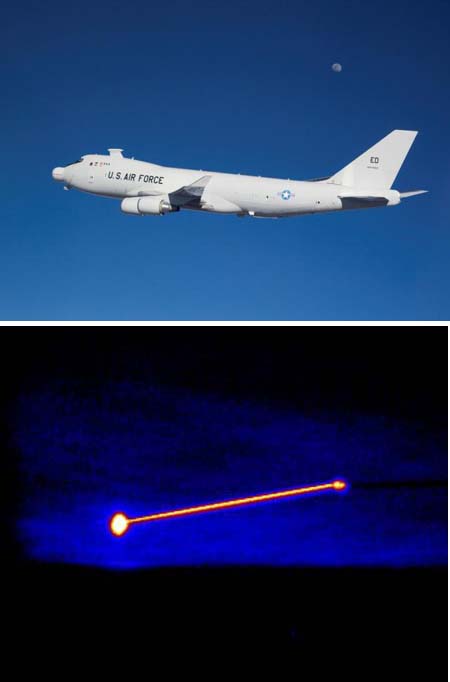 On Feb. 11 around 8:44 p.m. (PST), the Airborne Laser (ABL) successfully destroyed a boosting ballistic missile. The long-awaited shootdown, conducted at Point Mugu Naval Air Warfare Center’s Sea Range off the central California coast, serves as a “proof-of-concept demonstration for directed energy technology,” according to a Missile Defense Agency release. A threat-representative short-range ballistic missile launched from a mobile sea platform at 8:44 p.m. and, “within seconds,” the ABL used onboard sensors to detect the missile, a low-energy laser to track it, and another low-energy laser to measure and compensate for atmospheric disturbance, and then fired its megawatt-class high-energy laser to heat the target to “critical structural failure.” The entire engagement from missile launch to destruction took place “within two minutes.” The ABL is a modified Boeing 747-400F with a Northrop Grumman-designed high-energy laser, and Lockheed Martin-developed laser beam control/fire control system. (For ABL background, read The Airborne Laser Narrows Its Beam from the December 2006 Air Force Magazine) (Boeing release; Northrop Grumman release; Lockheed Martin release)
On Feb. 11 around 8:44 p.m. (PST), the Airborne Laser (ABL) successfully destroyed a boosting ballistic missile. The long-awaited shootdown, conducted at Point Mugu Naval Air Warfare Center’s Sea Range off the central California coast, serves as a “proof-of-concept demonstration for directed energy technology,” according to a Missile Defense Agency release. A threat-representative short-range ballistic missile launched from a mobile sea platform at 8:44 p.m. and, “within seconds,” the ABL used onboard sensors to detect the missile, a low-energy laser to track it, and another low-energy laser to measure and compensate for atmospheric disturbance, and then fired its megawatt-class high-energy laser to heat the target to “critical structural failure.” The entire engagement from missile launch to destruction took place “within two minutes.” The ABL is a modified Boeing 747-400F with a Northrop Grumman-designed high-energy laser, and Lockheed Martin-developed laser beam control/fire control system. (For ABL background, read The Airborne Laser Narrows Its Beam from the December 2006 Air Force Magazine) (Boeing release; Northrop Grumman release; Lockheed Martin release)
The Space Force’s work to establish a pool of at-the-ready commercial satellite capacity during a crisis is moving out of the pilot phase as the service prepares to award its next batch of contracts in 2026.

